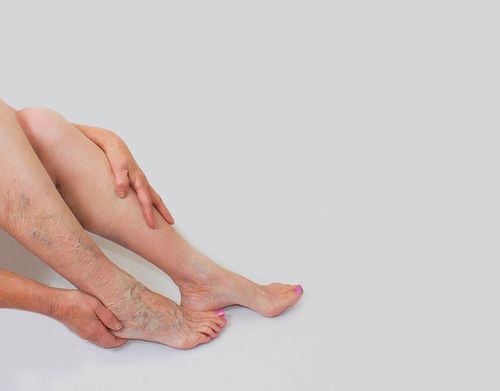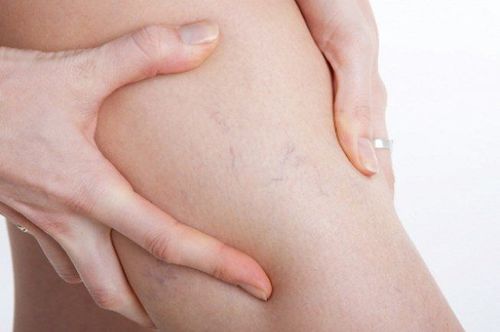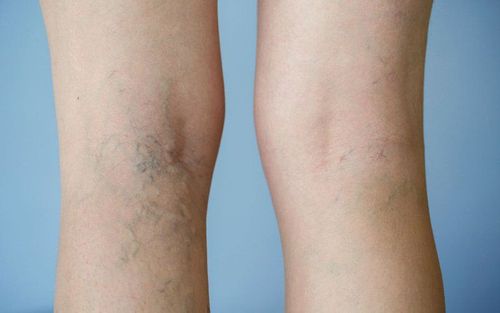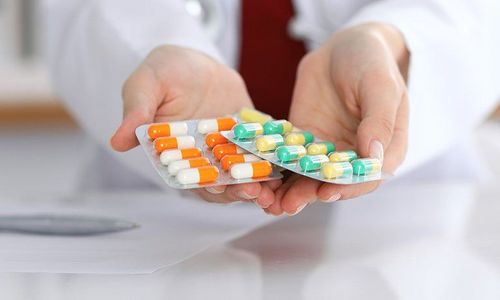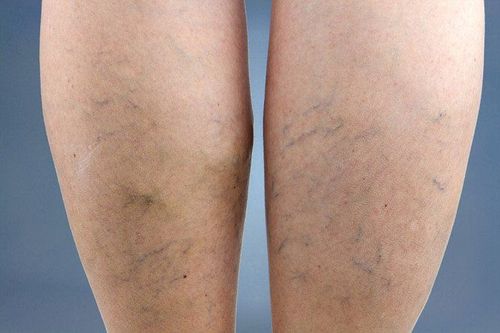This is an automatically translated article.
Posted by Specialist II, Senior Doctor Doan Du Dat - Head of Medical Examination Unit - Department of Medical Examination and Internal Medicine - Vinmec Ha Long International Hospital
1. What is varicose veins of the lower extremities?
Varicose veins of the lower extremities is a decline in the function of the veins in the legs to return blood to the heart, thereby causing blood stasis, hemodynamic changes and tissue deformation. around.The disease causes pain, heavy legs, leg edema, crawling ants, night cramps... can lead to intractable complications such as eczema, leg ulcers, bleeding, superficial and deep vein thrombosis. ..
The cause of varicose veins of the lower extremities has not been clearly identified. However, the disease can be related to a number of risk factors such as:
Pregnant women: It is caused by pressure from increasing blood volume to supply the developing fetus.
Gender: Due to pregnancy, multiple births and hormonal changes, women are twice as likely to have the disease as men. Genetics: If you have a family member with varicose veins, you have a higher risk of developing varicose veins.
Overweight, obesity: When overweight or obese, the blood volume in the circulatory system increases, leading to an increase in venous pressure in the legs and causing disease.
Age: The older you are, the greater the risk of varicose veins of the lower extremities. In advanced age, most of the veins have lost the necessary elasticity, the venous valve works weaker, causing the vein wall to become inflamed, dilated and enlarged.
Infrequent exercise: Staying in a sitting position for too long or standing for many hours will weaken the veins.
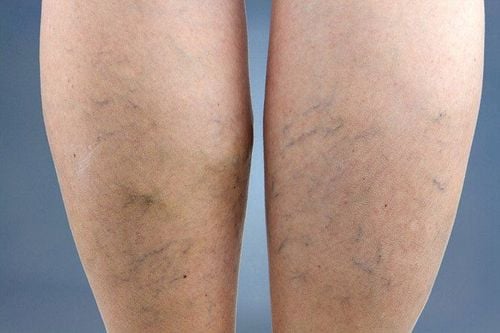
Nguyên nhân gây bệnh suy giãn tĩnh mạch chi dưới chưa được xác định rõ ràng
2. Symptoms of lower extremity venous insufficiency
The initial symptoms of venous insufficiency of the lower extremities are usually faint and transient, only when the disease has progressed to a severe stage will the patient be detected for treatment. Therefore, it is necessary to recognize the symptoms of the disease, even if it is transient, for immediate treatment. Here are some signs that may warn you that you are suffering from lower extremity venous insufficiency, specifically:
In the early stages:
Patients often present with foot pain, a feeling of heaviness in the legs, or wearing shoes that are tighter. normal; Leg fatigue, slight swelling when standing for a long time or sitting a lot; Cramps in the evening, feeling of being pricked, paresthesia like ants crawling at night. Many tiny blood vessels, especially in the ankles and feet, emerge. Advanced stage:
Swollen feet, possibly in ankles or feet. The lower leg area changes color due to blood stasis in the veins for a long time, resulting in dystrophy. Swollen veins cause a feeling of heaviness and pain in the legs, blood leaks out of the vessels causing leg edema, usually this phenomenon does not go away with rest Complications stage:
The disease causes superficial thrombophlebitis Proximal and distal deep vein thrombosis and pulmonary embolism. Severe bleeding due to varicose veins, infected ulcers of chronic venous insufficiency.
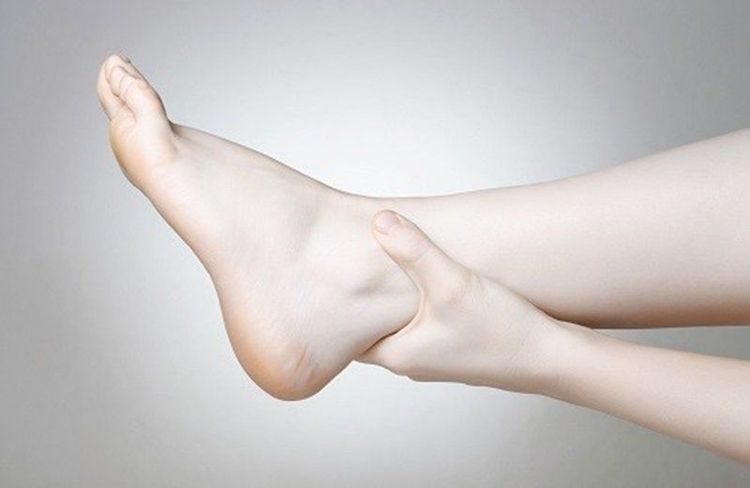
Người bệnh suy tĩnh mạch chi dưới có thể phù ở mắt cá hay bàn chân
3. Complications of lower extremity venous insufficiency
Some complications of lower extremity venous insufficiency such as:
The patient's legs are swollen, painful and cramp at night More severe than thrombophlebitis, hot legs, swollen red,... Varicose veins, clearly visible under the skin, making it unsightly The final stage progresses to dilatation of the entire venous system, stagnation of circulation, inflammation of the lower leg skin, infections that are difficult to treat A serious and frequent complication A common symptom of lower extremity venous insufficiency is the formation of blood clots in the veins, which can travel to the heart and cause pulmonary embolism, leading to death if not treated promptly.
4. Treatment and prevention of lower extremity venous insufficiency
4.1. Treatment of venous insufficiency of the lower extremities
Preventive medical treatment: To prevent reflux and make the forces acting on the flow of veins better. Patients should keep their legs high when lying down, exercise stronger muscles, avoid standing or sitting for a long time, wear elastic socks or wrap their legs with elastic bandages, eat a high-fiber diet ... Medical treatment with drugs: Medicines including Daflon, Rutin C, Veinamitol... but most of them only work in the early stages Minimally invasive intervention: Cooling method with negative 90oC liquid nitrogen.

Uống nhiều nước để phòng ngừa suy giãn tĩnh mạch chi dưới
4.2. Prevention of venous insufficiency of the lower extremities
Improve working conditions, strengthen occupational safety and hygiene. Avoid standing for a long time in one position when working. Wear protective equipment often; Exercise (walk) regularly and lose weight; Eat the right nutrition; Elevate your legs when sitting and avoid standing in one place for long periods of time; Wear sandals or flat shoes, do not wear high heels often. See your doctor if you have symptoms of varicose veins. The most serious complication of varicose veins of the lower extremities is the formation of blood clots in the blood vessels that cause blockages, which develop into discolored patches on the skin and necrotic ulcers. skin death. To help customers effectively screen for this disease, Vinmec International Hospital offers a package of lower extremity venous insufficiency tests to help determine the causes, complications and grade of venous insufficiency.
When choosing to use the lower extremity venous insufficiency package, customers will receive:
Cardiology specialist examination (by appointment) Peripheral blood cell analysis (by laser counter) Glucose quantification Creatinine quantification Quantitative Pro Calcitonin Measure AST Activity (GOT) Measure ALT Activity (GPT) Measure LDL - C (Low density lipoprotein Cholesterol) Quantify Triglycerides Quantify Cholesterol Electrolytes (Na, K, Cl) Normal Electrocardiogram Ultrasound heart, pericardium through the chest wall Straight chest x-ray Doppler ultrasound of the arteries and veins of the lower extremities (Vins of the lower extremities).
Please dial HOTLINE for more information or register for an appointment HERE. Download MyVinmec app to make appointments faster and to manage your bookings easily.
MORE
Causes, risk factors of chronic varicose veins in the lower extremities Guidelines for prevention and care of people with varicose veins Exercises for rehabilitation treatment of varicose veins in the lower extremities





